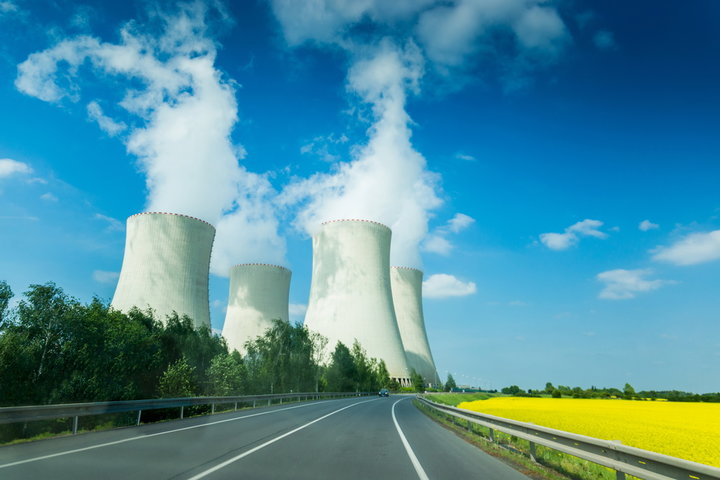The laws of supply and demand have an inevitability to them and recent moves in the uranium market are another reminder of their power. Back in September 2023, uranium was selling at around US$50 a pound. As we write, (12 March 2024) that price has moved to $US91/lb.1 In this article we look at the supply and demand dynamics underpinning that rise and at how the managers of the Platinum Global Transition Fund2 (Quoted Managed Hedge Fund) (ASX: PGTX) invest in companies that can take advantage of it.
Bottomed out
For over a decade, the uranium market has been plagued by excess supply, low prices and negative sentiment around nuclear power. Between 2014 and mid 2021 for example, prices hovered around US$30/lb. For context, it last peaked at US$136/lb in 2007.
On the demand side a number of factors kept the main buyers – utility companies - from paying up for the radioactive metal.
Meanwhile, the supply of uranium was increasing, largely thanks to low-cost production from Kazakhstan. With plentiful supply and cratering demand, energy utilities were able to buy uranium at low ‘spot’ rates rather than contracting for long-term supply. The uranium price fell briefly below US$20/lb.
At sub US$30/lb, many uranium mines became uneconomic and were placed into ‘care and maintenance’.4 That led to a dramatic fall in mined production.

The debate about nuclear energy is heating up in Australia. Meanwhile, so is the uranium price.
Something changed
In the early 2020s the supply/demand dynamic changed and the uranium price made two dramatic jumps, leaping from $US30/pound to $US50/pound in 2021 and $US50 to $US100/lb in 2023.
What’s behind this shift?
Underpinning all these factors is the increasing realisation that nuclear power could be key to decarbonising energy. Nuclear provides reliable baseline power and, unlike fossil-fuel fired power plants, nuclear reactor lifecycle carbon dioxide emissions have a profile on par with renewables.
“There’s been a huge supply/demand switch,” says Liam Farlow, Co-Portfolio Manager of the PGTX. “For the first time in the history of the uranium market as we know it, we may see a sustained shortfall of available supply – and it’s beginning to be reflected in the price.”
That’s why uranium is now a key portfolio theme for the PGTX – a fund specifically designed to provide capital growth over the long term by investing in undervalued companies that are seeking to financially benefit from the transition away from fossil-fuel derived energy and goods production and consumption i.e. the carbon transition.
In the midst of this major market shift, PGTX added four uranium stocks to the portfolio – Cameco and the Sprott Physical Uranium Trust (SPUT) from Canada, Kazakhstan’s Kazatomprom and Australian developer Paladin Energy.
These four stocks have very different – and somewhat complementary - characteristics.
“Our investment approach in the PGTX is often about managing the capital cycle,” says Liam Farlow. “As the energy transition unfolds, capital flows in and out of different segments – out of solar energy into nuclear for example. In that interplay between the capital cycle and supply and demand shifts we seek to provide capital growth for our investors over the long term. Of course, a crucial way to maximise returns from those decisions is choosing the right mix of individual securities.”
Buyers who look past the price
Whilst supply and demand fundamentals drive markets, buyer behaviour is also crucial. Indeed understanding the behavioural element in markets is core to Platinum’s investment philosophy.
Tellingly, the prospects for further strength in the uranium market are improved by the buyer behaviour of the big energy utilities. Constrained supply means these buyers can no longer look to source uranium in the spot market. They’re now looking for the supply certainty of long-term contracts.
“Utilities are now genuinely concerned about lack of supply and that means they could start looking ‘past the price’.” says Liam. “For them, a US$20/lb move in the uranium price equates to a roughly $1 per megawatt/hr increase in fuel cost for their reactor. That won’t change their behaviour given the importance of keeping the reactor running and especially in the context of the huge capital cost of their plants.”
Given the depth of the current supply issues – and the fact it could take until 2030 or beyond for meaningful new supply to come on stream - these conditions could last for years. That's one of the reasons three of the stocks mentioned above - Cameco, SPUT and Kazatomprom are also in Platinum's flagship Platinum International Fund.
“We’ve got a market driven by price inelastic buyers who are motivated almost solely by supply worries - literally by fear of running out,” says Liam. “So we could see very high prices sustained for a number of years. And that’s good news for companies in the uranium sector.”
Want to know more?
For more on the philosophy and strategy of the PGTX take a look at our earlier article: Why investing in the energy transition is not just about renewables.
1 Source: Factset Commodities as at 08/03/2024
2 The Platinum Global Transition Fund invests in undervalued companies from around the world that are seeking to financially benefit from the transition away from fossil fuel-derived energy and goods production and consumption i.e. the carbon transition
3 https://world-nuclear.org/information-library/country-profiles/countries-g-n/japan-nuclear-power.aspx
4 When mines temporarily stop producing but the infrastructure and machinery is maintained and environmental risks managed.
5 https://world-nuclear.org/information-library/country-profiles/countries-a-f/china-nuclear-fuel-cycle.aspx
6 https://www.eia.gov/
Bottomed out
For over a decade, the uranium market has been plagued by excess supply, low prices and negative sentiment around nuclear power. Between 2014 and mid 2021 for example, prices hovered around US$30/lb. For context, it last peaked at US$136/lb in 2007.
On the demand side a number of factors kept the main buyers – utility companies - from paying up for the radioactive metal.
- High levels of global inventory and product availability.
- The progressive retirement of Japan’s nuclear fleet post the Fukushima tsunami. Before 2011, nuclear accounted for 30% of Japan’s energy. By 2019 Japan’s nuclear energy output had fallen by 75%.3
- Anti-nuclear sentiment in Europe drove a nuclear phase-out in many countries (notably Germany).
Meanwhile, the supply of uranium was increasing, largely thanks to low-cost production from Kazakhstan. With plentiful supply and cratering demand, energy utilities were able to buy uranium at low ‘spot’ rates rather than contracting for long-term supply. The uranium price fell briefly below US$20/lb.
At sub US$30/lb, many uranium mines became uneconomic and were placed into ‘care and maintenance’.4 That led to a dramatic fall in mined production.

The debate about nuclear energy is heating up in Australia. Meanwhile, so is the uranium price.
Something changed
In the early 2020s the supply/demand dynamic changed and the uranium price made two dramatic jumps, leaping from $US30/pound to $US50/pound in 2021 and $US50 to $US100/lb in 2023.
What’s behind this shift?
- The emergence of uranium ‘trusts’. These vehicles buy physical uranium, thus removing excess global uranium inventory from the system.
- An improving demand outlook driven by a resurgence in nuclear power. China’s annual uranium demand is expected to nearly quadruple to over 40,000 tonnes per year by 2040.5
- Japanese reactor restarts, life extensions for ageing plants and development of new technologies (such as small modular reactors). These are all incrementally positive for uranium demand.
- Sustained supply deficits, with long lead times to develop new supply.
- The self-sanctioning of Russian material after its invasion of Ukraine put further strain on an already underprepared nuclear value chain.
Underpinning all these factors is the increasing realisation that nuclear power could be key to decarbonising energy. Nuclear provides reliable baseline power and, unlike fossil-fuel fired power plants, nuclear reactor lifecycle carbon dioxide emissions have a profile on par with renewables.
“There’s been a huge supply/demand switch,” says Liam Farlow, Co-Portfolio Manager of the PGTX. “For the first time in the history of the uranium market as we know it, we may see a sustained shortfall of available supply – and it’s beginning to be reflected in the price.”
That’s why uranium is now a key portfolio theme for the PGTX – a fund specifically designed to provide capital growth over the long term by investing in undervalued companies that are seeking to financially benefit from the transition away from fossil-fuel derived energy and goods production and consumption i.e. the carbon transition.
In the midst of this major market shift, PGTX added four uranium stocks to the portfolio – Cameco and the Sprott Physical Uranium Trust (SPUT) from Canada, Kazakhstan’s Kazatomprom and Australian developer Paladin Energy.
These four stocks have very different – and somewhat complementary - characteristics.
- The Sprott Physical Uranium Trust owns physical uranium and gives the PGTX Fund pure exposure to upside in the uranium price.
- Cameco is a large, high-quality producer that provides exposure across the nuclear fuel cycle.
- Kazatomprom is the largest upstream producer of uranium. It’s a dividend paying stock, valued at a discount to its peers.
- Paladin Energy is a late stage development company that provides exposure to near-term production and so favourable exposure to market pricing.
“Our investment approach in the PGTX is often about managing the capital cycle,” says Liam Farlow. “As the energy transition unfolds, capital flows in and out of different segments – out of solar energy into nuclear for example. In that interplay between the capital cycle and supply and demand shifts we seek to provide capital growth for our investors over the long term. Of course, a crucial way to maximise returns from those decisions is choosing the right mix of individual securities.”
Buyers who look past the price
Whilst supply and demand fundamentals drive markets, buyer behaviour is also crucial. Indeed understanding the behavioural element in markets is core to Platinum’s investment philosophy.
Tellingly, the prospects for further strength in the uranium market are improved by the buyer behaviour of the big energy utilities. Constrained supply means these buyers can no longer look to source uranium in the spot market. They’re now looking for the supply certainty of long-term contracts.
“Utilities are now genuinely concerned about lack of supply and that means they could start looking ‘past the price’.” says Liam. “For them, a US$20/lb move in the uranium price equates to a roughly $1 per megawatt/hr increase in fuel cost for their reactor. That won’t change their behaviour given the importance of keeping the reactor running and especially in the context of the huge capital cost of their plants.”
Given the depth of the current supply issues – and the fact it could take until 2030 or beyond for meaningful new supply to come on stream - these conditions could last for years. That's one of the reasons three of the stocks mentioned above - Cameco, SPUT and Kazatomprom are also in Platinum's flagship Platinum International Fund.
“We’ve got a market driven by price inelastic buyers who are motivated almost solely by supply worries - literally by fear of running out,” says Liam. “So we could see very high prices sustained for a number of years. And that’s good news for companies in the uranium sector.”
Want to know more?
For more on the philosophy and strategy of the PGTX take a look at our earlier article: Why investing in the energy transition is not just about renewables.
1 Source: Factset Commodities as at 08/03/2024
2 The Platinum Global Transition Fund invests in undervalued companies from around the world that are seeking to financially benefit from the transition away from fossil fuel-derived energy and goods production and consumption i.e. the carbon transition
3 https://world-nuclear.org/information-library/country-profiles/countries-g-n/japan-nuclear-power.aspx
4 When mines temporarily stop producing but the infrastructure and machinery is maintained and environmental risks managed.
5 https://world-nuclear.org/information-library/country-profiles/countries-a-f/china-nuclear-fuel-cycle.aspx
6 https://www.eia.gov/
Disclaimer
Platinum Investment Management Limited ABN 25 063 565 006, AFSL 221935, trading as Platinum Asset Management (“Platinum”). This information is general in nature and does not take into account your specific needs or circumstances. You should consider your own financial position, objectives and requirements and seek professional financial advice before making any financial decisions.
You should also read the Platinum Global Transition Fund (Quoted Managed Hedge Fund) product disclosure statement and target market determination before making any decision to acquire units in the fund, copies of which are available at www.platinum.com.au/Invest-Now.
Commentary reflects Platinum’s views and beliefs at the time of preparation, which are subject to change without notice. Certain information contained in this article constitutes "forward-looking statements". Due to various risks and uncertainties, actual events or results may differ materially from those reflected or contemplated in such forward-looking statements and no undue reliance should be placed on those forward-looking statements.
To the extent permitted by law, no liability is accepted by Platinum for any loss or damage as a result of any reliance on this information.
Risk warning
The Fund may invest in companies that currently have material fossil fuels businesses who have made commitments to reduce their scope 1, 2 and 3 emissions. By investing in companies involved in manufacturing or resource extraction, the Fund will not by its nature be a low carbon emissions fund relative to the broader listed global equity market and may have investments in companies that currently have material fossil fuel businesses.
The above information is commentary only (i.e. our general thoughts). It is not intended to be, nor should it be construed as, investment advice. To the extent permitted by law, no liability is accepted for any loss or damage as a result of any reliance on this information. Before making any investment decision you need to consider (with your financial adviser) your particular investment needs, objectives and circumstances.
You should also read the Platinum Global Transition Fund (Quoted Managed Hedge Fund) product disclosure statement and target market determination before making any decision to acquire units in the fund, copies of which are available at www.platinum.com.au/Invest-Now.
Commentary reflects Platinum’s views and beliefs at the time of preparation, which are subject to change without notice. Certain information contained in this article constitutes "forward-looking statements". Due to various risks and uncertainties, actual events or results may differ materially from those reflected or contemplated in such forward-looking statements and no undue reliance should be placed on those forward-looking statements.
To the extent permitted by law, no liability is accepted by Platinum for any loss or damage as a result of any reliance on this information.
Risk warning
The Fund may invest in companies that currently have material fossil fuels businesses who have made commitments to reduce their scope 1, 2 and 3 emissions. By investing in companies involved in manufacturing or resource extraction, the Fund will not by its nature be a low carbon emissions fund relative to the broader listed global equity market and may have investments in companies that currently have material fossil fuel businesses.
The above information is commentary only (i.e. our general thoughts). It is not intended to be, nor should it be construed as, investment advice. To the extent permitted by law, no liability is accepted for any loss or damage as a result of any reliance on this information. Before making any investment decision you need to consider (with your financial adviser) your particular investment needs, objectives and circumstances.
Author



